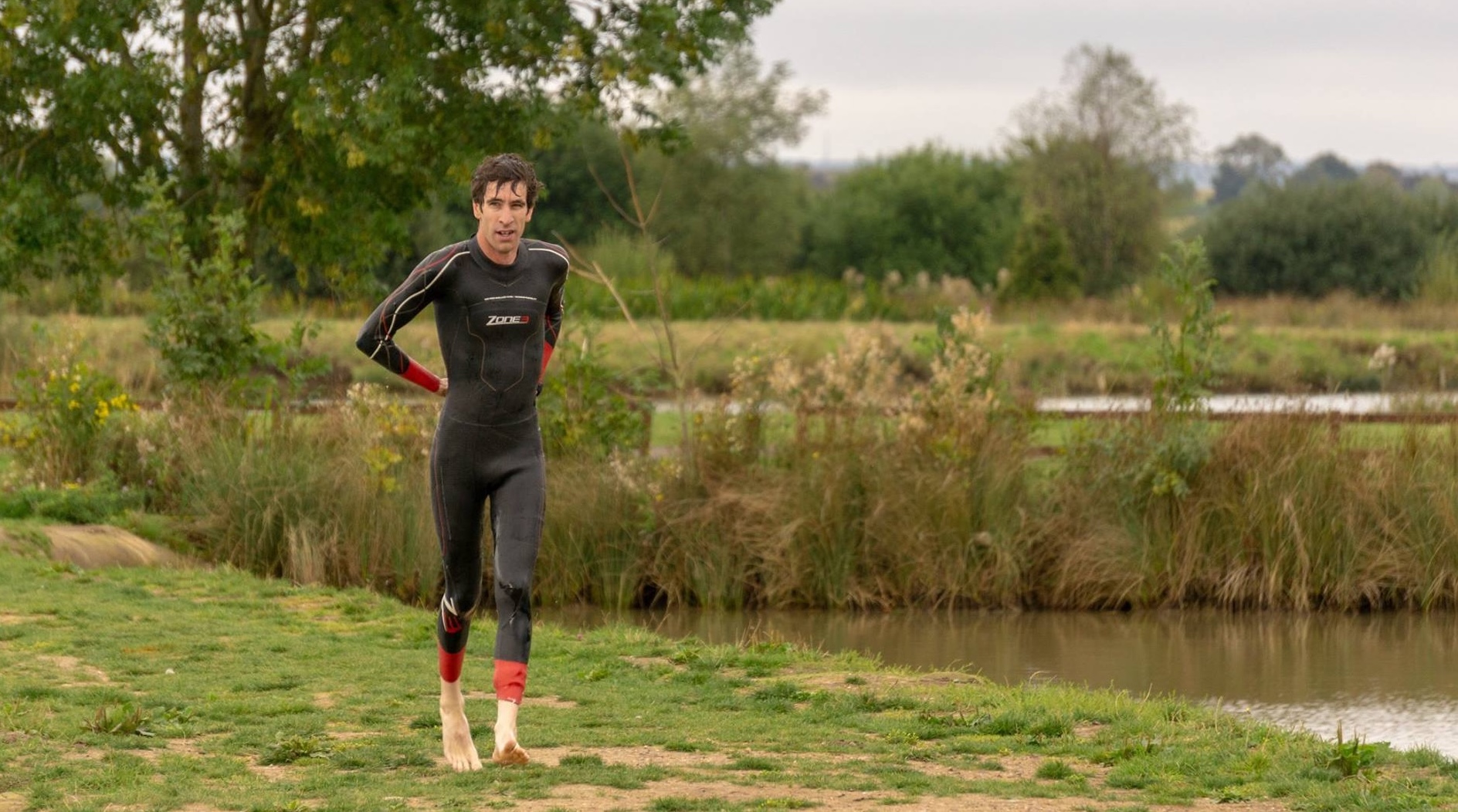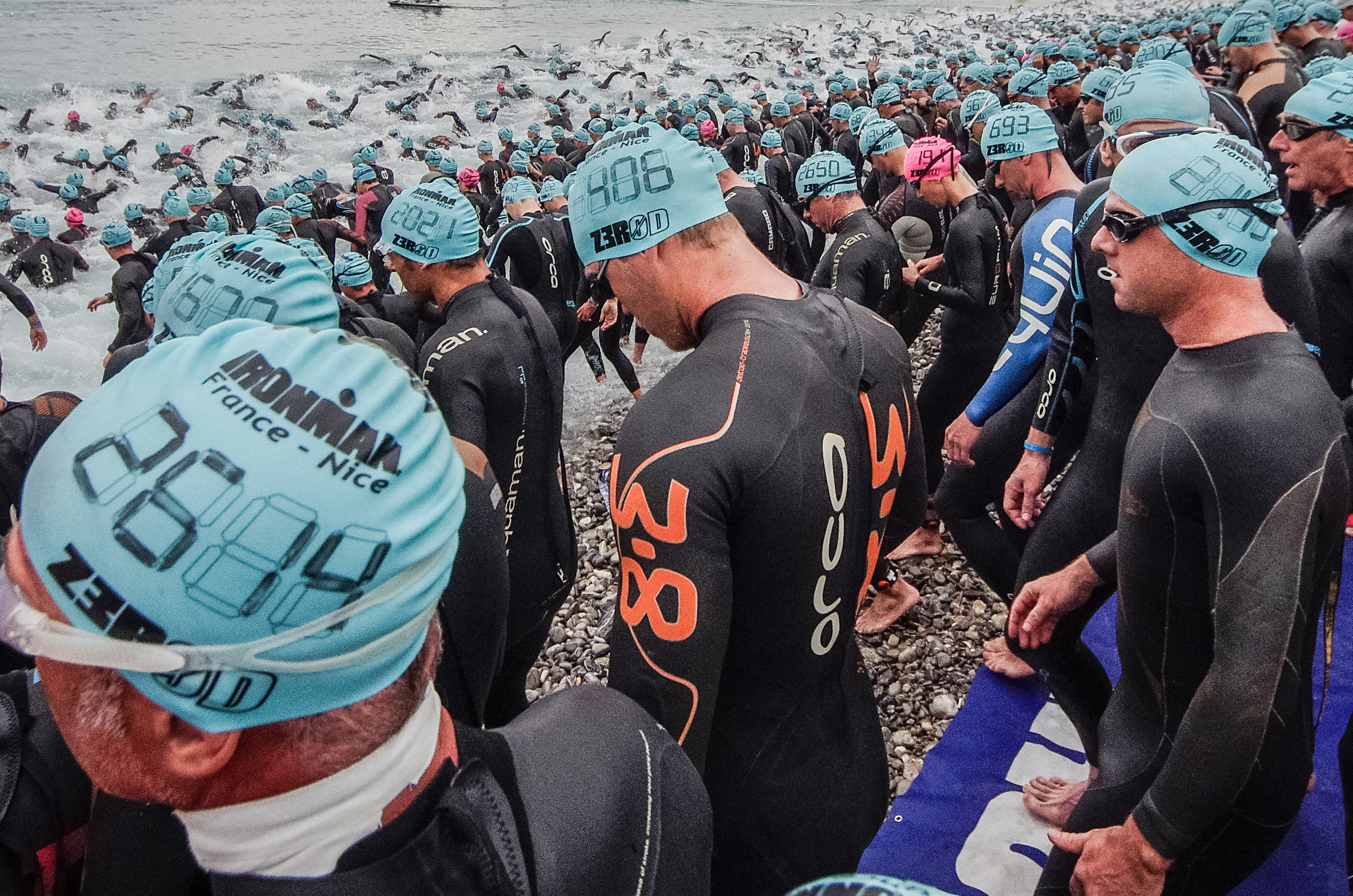| Pacing can be difficult at the best of times, before you even start to introduce competing in three sports back to back. Most of us have a good idea about what our 5K pace is, but what about a 5K at the end of a triathlon, or even how hard we should ride the bike at an Olympic triathlon?A quick disclaimer before I get any further, if you are taking on a distance for the first time, it should be completed at an intensity where you are certain you can finish the event. If you are in any doubt, wait until the last half of the run to really fire up the afterburners and see what you can do. Getting the medal around your neck, learning about the distance and how your body responds to different intensities is more important than trying to lock in a specific strategy.The underlying take home message here should be that you need to see yourself as a triathlete, not a swimmer who does a bit of running and cycling, or a runner that sees the swim and bike as a way to get to the start line. Zoom our, focus on your weaknesses and pace for efficiency, not ego. |
| If you are taking on a sprint, you can probably afford to treat it like an FTP test or a 5K race. You want to be racing uncomfortably hard throughout. At no point do you want to feel comfortable or like you’re just ticking the miles, off, you should always be asking yourself if you can go any harder. Accelerate a bit occasionally, see how it feels and ask yourself whether you can maintain it. If the answer is yes then go a little harder, if the answer is no, back off a bit. If the answer is maybe, you’ve probably got it right. The swim should be very hard, but you need to apply your effort in a mindful way. Focus on pushing the water behind you, not on having a hard hand entry. We want to swim hard, but a strong kick or thrashing arms are an inefficient way of propelling ourselves through the water. On the bike we should really be feeling the burn in our legs and our lungs. We should be riding much faster than usual, but without blowing a gasket ahead of the run. However, it’s only be getting this wrong that you find out what you’re capable of. Most people should be able to ride at around 90-95% of their FTP on the bike and still have legs left for the run, but most don’t come close to this as they’re too scared of blowing up. As long as this isn’t your first race, this is where you can afford to roll the dice and see what you’re really capable of.By the time you’re onto the run, you should be trying to wring every last drop out of your legs. We’re into the final furlong here, and this isn’t the time to hold back. Focus on your breathing, and push until your legs are screaming at you. Olympic By the time we step up to the Olympic distance we need a much more mindful approach to our pacing. We can’t afford to go hard here, we will blow up in a race that will take most people between 2:30-3 hours.The swim makes up a very large part of an Olympic distance race, so has to be approached with less reckless abandon than we would over the sprint. You want to be swimming hard, but it should also feel sustainable. It’s ok to push your arms hard, but you shouldn’t be exhausting yourself. Unless you’re a very strong swimmer, you need to be pacing yourself carefully here, not holding feet that are too fats for you in the first 500M and then getting dropped hard. The bike is the single best place to make, or lose time. I took 40 minutes off of my Olympic PB when I really attacked the bike. Yes my swim, transitions and my run were also improved, the courses were different as was the weather, but when I had the courage to really open up the legs and ride hard for 40KM instead of trying to to save my legs for the run (my strongest discipline), I reaped the rewards. You shouldn’t be afraid to push hard here, around the 80-90% of FTP mark, depending on your fitness. Strong cyclists may even be able to push harder if they want to extend their advantage, and know they won’t fade too badly on the run.By the time you’re onto the run itself, it’s all about settling into a rhythm. 10K is a relatively long way to go, and we can’t afford to go out guns-a-blazing. If you can afford to go out super hard, you probably didn’t push hard enough on the swim or the bike. This was my mistake in my early years in the sport, holding back too much as I wanted to be fresh for the run. I gave up enormous amounts of time on the bike because I wanted to have the satisfaction of running past everyone on the run, letting my ego get in the way of improving as a triathlete. 70.3/Middle Distance By the time you move up to 70.3, you have to completely re-think your approach to racing. Most of those taking on a middle distance event for the first time will be looking at around a six hour finish. Throughout the event you need to keep asking yourself whether you can hold this effort for six hours, rather than the duration of that discipline. Is the answer is no, you need to back off. The swim at the middle distance is a glorified warm up. It should take up around 40-45 minutes of most people’s day. You do not want to swim at close to your 1500M pace, you need to ratchet it right back and cruise the swim. The bike and run is what makes or breaks our race.Once we get onto the bike, it’s easy to get carried away early on, or aim for a target such as a three hour bike split. The way we approach the first hour of the bike impacts the rest of our race more than anything else. We need to look beyond the finish line of the bike, and ahead to the run much more than over the Olympic or sprint distances.The run is vastly different to any half marathon you will ever run. Seeing people walk during a sprint or Olympic distance race is rare, but not unheard of. Walking during the run of a middle distance is a rite of passage. Your legs will be tired, your aerobic system shot and your stomach likely unhappy with you. The challenge of swimming 1900M, riding 90KM and running a half marathon without stopping is not to be underestimated. If you finish an Olympic triathlon in around 2:30 you’re likely looking at around six hours for a 70.3, this is more than double the duration, it’s an entirely different ballgame. In fact, I’d say that every decision you make all day should be focused around not walking on the run. Sure, you should push hard to set a new PB on the bike, but if you lose 30 minutes on the run as a result, was it really worth it? Ironman An Ironman is essentially a rolling eating competition. If you are coming from a background of running short, hard events, this is going to be an enormous wake up call. The swim is probably the most intense part of the day for top athletes, but most age groupers are just trying to get round without a kick in the face. For the vast majority of us, we should be focused on finishing the swim with as much energy left over as possible. We could swim hard to save five minutes, but over the course of the day, will the fatigue generated be worth it? It depends how close you are to achieving your potential. Once we’re onto the bike, we need to settle in for the long haul. Even the fastest pro athletes are riding easy. In days gone by, pundits would actually interview athletes on the bike course, with the pros answering in full sentences, cracking jokes. This is not a hard effort, nobody is pushing to the limit over 180KM, they are trying to go as fast as they can for as little energy as possible. The Ironman marathon is a war of attrition. Try not to walk is the best advice I can give anyone at this point. The speed you run at is irrelevant if you can’t sustain it for 42.2KM. The hard truth is that a fast Ironman requires a lot of practice races, training and mistakes. As the differences in our bodies, strengths and weaknesses become greater over a longer distance, I’m not really in a position to make recommendations to the average triathlete on the best pacing strategy for an Ironman. As ever, the answer is “it depends”. |




